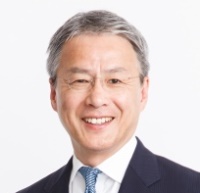
by Noriyuki Morimoto
Takashi Murakami’s book “Art Entrepreneurship” (Gentosha) is a work of art in prose by a representative Japanese modern artist. I call it art because of its depth that allows it to be read in any way.
The book is a long prose poem about the artist himself, and coming from deep insight into the social relevance of creative activity from a historical context, it is something close to a book of philosophy. It is also an excellent book of entrepreneurship based on thorough market analysis. On its cover are the words “super business book” in small print. Given that these words appear nowhere in the book’s pages, it must have been added by the publisher Gentosha. This little twist is also a nice part of this art piece.
A well known statement of Murakami is that the modern art market is established with wealthy people in western countries as the main buyers, and art pieces do not sell well unless they match their preferences. As for the expectations of such buyers, Murakami presents the following three elements: whether it involves a suggestion of a new game, whether it involves a new interpretation of western art history, and whether it comes with a violation of rules with conviction.
I think his second point is especially poignant: this was exactly the case for ukiyo-e prints. The value of ukiyo-e was discovered by foreigners. In isolated Japan, it was naturally impossible to position the homebred ukiyo-e tradition within the context of western art history. By coincidence, ukiyo-e flowed out of Japan and gained a position in western art history, resulting in the birth of ukiyo-e as an art form. Therefore, modern-day appreciation of ukiyo-e is not for ukiyo-e as Japanese art. It is an appreciation within the context of western art history.
What Murakami did as an artist was to change the happenstance of ukiyo-e to a necessity. By studying western art history at an advanced and strategic level, and positioning his own art in its context, he succeeded in gaining a position at the cutting edge of the buyers’ collections. That’s why Murakami’s works sell at hefty prices.
A simple extension of western art history does not sell expensively. Suggestion of a new game, a new interpretation, and violation of rules with conviction is needed. Murakami incorporated such drastic elements drawing from Japanese manga culture and otaku culture, bringing them together under his “Superflat” concept. He is an artist with a command of astonishingly deep strategy and highly technical tactics. Truly amazing.

Chief Executive Officer, HC Asset Management Co.,Ltd. Noriyuki Morimoto founded HC Asset Management in November 2002. As a pioneer investment consultant in Japan, he established the investment consulting business of Watson Wyatt K.K. (now Willis Towers Watson) in 1990.

